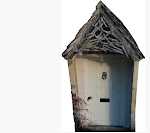
This summer, ZooNation’s
Into the Hoods has returned to London at the Royal Festival Hall after an acclaimed 2008 season in the West End.
The ninety-minute urban dance show, which made its debut at the Edinburgh Fringe in 2006, follows a boy and girl who, venturing out of their playground, become prisoners of the landlord of the Ruff Endz estate.
At the outset, a narrator speaks over animations of an illuminated manuscript book and a twinkling music-box refrain, giving the gloss of tradition, but the MC’s announcement, ‘This is theatre…but this is hip-hop theatre, so MAKE SOME NOISE!’ lets audiences know that they’re not exactly in for Danny Kaye in Hans Christian Andersen.
On the Ruff Endz estate, familiar figures from the world of fairytale are updated for the urban present. Spinderella is an aspiring DJ; ‘Prince’ is a Pop Idol reject, the estate’s ‘E-list’ celebrity; Wolf is a money-grabbing wannabe record mogul, while Lil Red dreams of singing stardom, and Jax of being a record producer, while the crimelord Giant does his deals from a penthouse at the top of the tower block.
The landlord makes a bargain with the lost children – he will give them money for bus tickets home if they fetch gifts for the 18th birthday of his daughter Rap-on-Zel: ‘An iPod white as milk, a hoodie as red as blood, weave as yellow as corn, and trainers as pure as gold.’
On their quest, the children interact with the iconic fairytale characters, who play out their stories in contemporary form – Wolf luring Lil Red into an exploitative record contract by impersonating her Grandma, Jax ascending to the Giant’s penthouse for a martial-arts faceoff, and Spinderella empowered to DJ at Prince’s ball, thanks to the gold shell-suited Fairy Gee, who dances to Destiny’s Child’s Independent Women.
There’s a lot of fun to be had in this witty, energetic show – from the spot-on musical choices (Spinderella’s theme is the plaintive ‘Roads’ by Portishead, that of the Ugly Sisters ‘U-G-L-Y’ by Daphne and Celeste) to the inspired choreography, including a couple of eye-popping perspective shifts which allow the Giant to fall ‘away’ from the audience and Rap-on-Zel’s hair to be climbed across stage to the theme from Mission: Impossible.
The whole show is ripe with modern references – the due date for Jax’s rent is counted down as an homage to ‘24’, and pensioners dance off with zimmer frames and wheelchairs in a parody of It’s Like That, while Rap-on-Zel’s room is decorated with posters of Eminem, Foxy Brown and Missy Elliott…and prison-style tally marks scratched on her wall.
For fairy tale lovers, however, the most exciting change to the traditional stories lies in their juxtaposition. What were, in traditional versions, quest narratives with single protagonists, become the linked struggles of a community on the estate. Friendships and allegiances complicate the idea of ‘good’ and ‘evil’ characters – ‘Prince’ is unreliable and egotistical, but he gets on with Jax; the girls show solidarity with one another and are all equally immune to reject Prince’s advances; when Jax is evicted and left homeless, it is Lil Red who is there for him (they share iPod earphones and even have a romantic moment beneath a ‘Match.com’ billboard).
The production is punchy, unsentimental about its urban setting, but also true to the tales from which it draws, and positive about the human spirit to the extent that every character gets their happy ending (including the Ugly Sisters, who become a girl group lip-synching to the Shoop Shoop Song).
Kate Prince’s show remains an inspired and vibrant tribute to the power of the fairy tale, loosely adapted from Sondheim’s Into the Woods but by now very much its own work. It’s on throughout the first half of August at the Royal Festival Hall on London’s South Bank, and well worth a visit for any lover of fairytales. You’ll find all the information you need for a visit at
www.intothehoods.comMatthew Finch blogs at
booksadventures.blogspot.com













